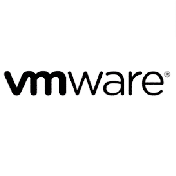Seminarinhalt
Powered by Arrow ECS GmbH
Dieser fünftägige Intensivkurs zu VMware vSphere 8 vermittelt praxisnah die Installation, Konfiguration und Verwaltung von VMware ESXi™ 8 und VMware vCenter® 8. Bereiten Sie sich auf die Administration einer vSphere-Infrastruktur jeder Größe vor – die Grundlage für moderne VMware-Technologien im softwaredefinierten Rechenzentrum.
Kursziele:
Dieses VMware vSphere Training eignet sich damit ideal für IT-Profis, die ihre VMware-Kenntnisse deutlich erweitern möchten!
Dieser fünftägige Intensivkurs zu VMware vSphere 8 vermittelt praxisnah die Installation, Konfiguration und Verwaltung von VMware ESXi™ 8 und VMware vCenter® 8. Bereiten Sie sich auf die Administration einer vSphere-Infrastruktur jeder Größe vor – die Grundlage für moderne VMware-Technologien im softwaredefinierten Rechenzentrum.
Kursziele:
- ESXi-Hosts installieren und konfigurieren
- vCenter bereitstellen und verwalten
- virtuelle Netzwerke und Datenspeicher einrichten
- virtuelle Maschinen erstellen, migrieren und optimieren
- vSphere-Cluster mit High Availability und DRS konfigurieren
- Lifecycle-Management für vSphere-Infrastrukturen
Dieses VMware vSphere Training eignet sich damit ideal für IT-Profis, die ihre VMware-Kenntnisse deutlich erweitern möchten!
Programm
Course Introduction
- Introductions and course logistics
- Course objectives
vSphere and Virtualization Overview
- Explain basic virtualization concepts
- Describe how vSphere fits in the software-defined data center and the cloud infrastructure
- Recognize the user interfaces for accessing vSphere
- Explain how vSphere interacts with CPUs, memory, networks, storage, and GPUs
Installing and Configuring ESXi
- Install an ESXi host
- Recognize ESXi user account best practices
- Configure the ESXi host settings using the DCUI and VMware Host Client
Deploying and Configuring vCenter
- Recognize ESXi hosts communication with vCenter
- Deploy vCenter Server Appliance
- Configure vCenter settings
- Use the vSphere Client to add and manage license keys
- Create and organize vCenter inventory objects
- Recognize the rules for applying vCenter permissions
- View vCenter logs and events
Configuring vSphere Networking
- Configure and view standard switch configurations
- Configure and view distributed switch configurations
- Recognize the difference between standard switches and distributed switches
- Explain how to set networking policies on standard and distributed switches
Configuring vSphere Storage
- Recognize vSphere storage technologies
- Identify types of vSphere datastores
- Describe Fibre Channel components and addressing
- Describe iSCSI components and addressing
- Configure iSCSI storage on ESXi
- Create and manage VMFS datastores
- Configure and manage NFS datastores
Deploying Virtual Machines
- Create and provision VMs
- Explain the importance of VMware Tools
- Identify the files that make up a VM
- Recognize the components of a VM
- Navigate the vSphere Client and examine VM settings and options
- Modify VMs by dynamically increasing resources
- Create VM templates and deploy VMs from them
- Clone VMs
- Create customization specifications for guest operating systems
- Create local, published, and subscribed content libraries
- Deploy VMs from content libraries
- Manage multiple versions of VM templates in content libraries
Managing Virtual Machines
- Recognize the types of VM migrations that you can perform within a vCenter instance and across vCenter instances
- Migrate VMs using vSphere vMotion
- Describe the role of Enhanced vMotion Compatibility in migrations
- Migrate VMs using vSphere Storage vMotion
- Take a snapshot of a VM
- Manage, consolidate, and delete snapshots
- Describe CPU and memory concepts in relation to a virtualized environment
- Describe how VMs compete for resources
- Define CPU and memory shares, reservations, and limits
Deploying and Configuring vSphere Clusters
- Create a vSphere cluster enabled for vSphere DRS and vSphere HA
- View information about a vSphere cluster
- Explain how vSphere DRS determines VM placement on hosts in the cluster
- Recognize use cases for vSphere DRS settings
- Monitor a vSphere DRS cluster
- Describe how vSphere HA responds to various types of failures
- Identify options for configuring network redundancy in a vSphere HA cluster
- Recognize vSphere HA design considerations
- Recognize the use cases for various vSphere HA settings
- Configure a vSphere HA cluster
- Recognize when to use vSphere Fault Tolerance
Managing the vSphere Lifecycle
- Enable vSphere Lifecycle Manager in a vSphere cluster
- Describe features of the vCenter Update Planner
- Run vCenter upgrade prechecks and interoperability reports
- Recognize features of VMware vSphere® Lifecycle Manager™
- Distinguish between managing hosts using baselines and managing hosts using images
- Describe how to update hosts using baselines
- Describe ESXi images
- Validate ESXi host compliance against a cluster image and update ESXi hosts
- Update ESXi hosts using vSphere Lifecycle Manager
- Describe vSphere Lifecycle Manager automatic recommendations
- Use vSphere Lifecycle Manager to upgrade VMware Tools and VM hardware
Am Ende des Kurses sollten Sie in der Lage sein, die folgenden Ziele zu erreichen:
- Installieren und Konfigurieren von ESXi-Hosts
- vCenter bereitstellen und konfigurieren
- Verwenden des vSphere-Clients zum Erstellen des vCenter-Inventars und Zuweisen von Rollen an vCenter-Benutzer
- Erstellen von virtuellen Netzwerken mit vSphere-Standard-Switches und verteilten Switches
- Erstellen und Konfigurieren von Datenspeichern mit von vSphere unterstützten Speichertechnologien
- Verwenden des vSphere® Client™ zum Erstellen von virtuellen Maschinen, Vorlagen, Klonen und Snapshots
- Erstellen von Inhaltsbibliotheken für die Verwaltung von Vorlagen und die Bereitstellung von virtuellen Maschinen
- Verwalten der Ressourcenzuweisung für virtuelle Maschinen
- Migrieren virtueller Maschinen mit VMware vSphere® vMotion® und VMware vSphere® Storage vMotion®
- Erstellen und Konfigurieren eines vSphere-Clusters, der mit VMware vSphere® High Availability und VMware vSphere® Distributed Resource Scheduler™ aktiviert ist
- Verwalten des Lebenszyklus von vSphere, um vCenter, ESXi-Hosts und virtuelle Maschinen auf dem neuesten Stand zu halten
Zielgruppen
- Systemverwalter
- Systemingenieure
Vorkenntnisse
Erfahrung in der Systemverwaltung von Microsoft Windows- oder Linux-Betriebssystemen
Wichtige Information
Dieses Seminar ist auch für Personen die v7 im Einsatz haben geeignet.



Top Training gewesen, sehr hilfreich und gut gestalttet
VMware vSphere: Install, Configure, Manage [V8]
26.03.2024Top Training gewesen, sehr hilfreich und gut gestalttet
— Erik A.Trainer ist auf alle Fragen eingegangen und war sehr kompetent.
VMware vSphere: Install, Configure, Manage [V8]
22.02.2024Trainer ist auf alle Fragen eingegangen und war sehr kompetent.
— Stefan S.